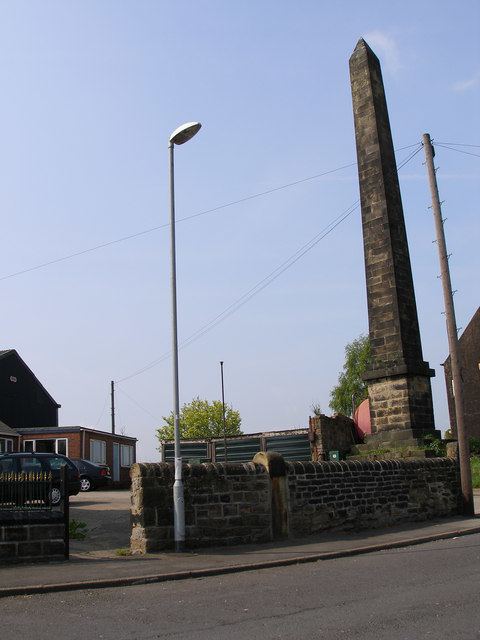Postcode district S70 Local time Thursday 9:06 AM | Sovereign state United Kingdom Dialling code 01226 | |
 | ||
Weather 5°C, Wind W at 23 km/h, 85% Humidity Post town | ||
Newton chambers and co rockingham colliery birdwell south yorkshire
Birdwell is a village in the Metropolitan Borough of Barnsley in South Yorkshire, England and is located approximately 4.5 miles (7 km) south of Barnsley. The village falls within the Rockingham Ward of the Barnsley Metropolitan Council. Neighbouring villages include Worsbrough, Tankersley and Hoyland Common.
Contents
- Newton chambers and co rockingham colliery birdwell south yorkshire
- Map of Birdwell Barnsley UK
- History
- Landmarks
- Education
- Sport
- Notable people
- References
Map of Birdwell, Barnsley, UK
The A61 (Sheffield Road) passes north-south through the length of Birdwell, and at the southern end is Birdwell Roundabout which is the junction between the M1 motorway at Junction 36 and the A61. The roundabout also marks the start of the Dearne Valley Parkway, a relatively new dual carriageway which links the M1 at Junction 36 to the A1 at Marr (near Doncaster).
Birdwell is run under the auspices of Barnsley Metropolitan Borough Council.
History
The origins of the village of Birdwell date back to the time of the English Civil War, around 1642, when the village name is first mentioned.
It is said by some that its name is derived from the old Anglo Saxon "Brydd-Wella" or "Bird-Well". Legend has it that servants from the nearby Tankersley Hall found a well of clear water. After observing some large birds drinking from it, they decided it must be fit to drink, and started to draw their water from the source, naming it the 'bird-well'. Local folklore says that the village took its name from a nearby well that never dried up and at which a heron was always present. The well has since been buried by the M1 motorway and a bench / sculpture commemorating its presence and the area's history was erected on the site.
In the years following the Second World War, open cast mining took place on much of the land to the northern end of Birdwell, and in some areas the remains of the quarries can still be found. Much of the land was subsequently restored to agriculture, mainly pasture with a little low key arable production and since the 1970s was owned by a local farming company. A small pocket of woodland called Parkinson Spring survived the mining activity and whilst little is known of its history, the name 'spring' could infer it was coppiced for the production of spring wood. The predominantly ancient woodlands of Miller Hill and Wigfield Wood are thought to be remnants of the once extensive woodland of the Wortley Park estate, an area through which the M1 motorway was subsequently built.
Hangmanstone Depot was the site of Allan Finlay's diesel engine export company Hartwood Exports, where many thousands of UK buses and other commercial vehicles ended their lives. Most of the engines which now power many Hong Kong Junks were exported from the Birdwell yard.
The first purpose-built mines rescue station, Tankersley Rescue Station, opened in Birdwell in 1902 and still stands today albeit as a beauty salon and private house. The dated rescue station plaque can still be seen on the side of the building.
Birdwell & Hoyland Common railway station, was a railway station on the South Yorkshire Railway's Blackburn Valley Line between Westwood and High Royds. The station was intended to serve Birdwell, Pilley and Hoyland Common, although the original chosen site was moved half a mile nearer towards Barnsley to serve the purposes of the Earl of Wharncliffe who was, at that time, sinking Wharncliffe Silkstone Colliery nearby. This move away made the station less convenient for most of the population. The station was opened in February 1855, the building having an ornate canopy over its entrance and containing a private waiting room for use by the Earl of Wharncliffe. The station was closed on 7 December 1953.
Landmarks
Education
Birdwell has its own primary school and private day-nursery called Chatterbox.
Sport
Two football teams from the village have played in the FA Cup: Birdwell F.C. and Birdwell Primitive Methodists F.C.
